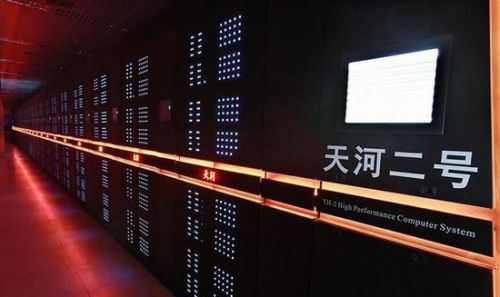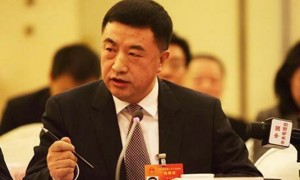By Tom McGregor, CCTV.com Panview commentator and editor
Supercomputers are indeed more powerful than your desktop or laptop. They can perform high-level tasks, such as boosting the development of computational science, quantum mechanics, weather forecasting, climate research, oil & gas exploration, molecular modeling, nuclear fusion and cryptanalysis.
The processing speeds of supercomputers are measured in floating-point operations per-second (flops) and a quadrillion flops are known as petaflops.
The Top500 list of international supercomputers ranks Chinese devices - Sunway TaihuLight and Tianhe-2 - as the number one and two fastest worldwide as of June 19. The listing is posted annually in June by a team of researchers from the United States and Germany.

TaihuLight can reach peak performance - 93 petaflops and Tianhe-2 can strike 33.9 petaflops. TaihuLight had knocked off Tianhe-2 from the top spot last year and kept its position this month. The Tianhe-2 was a consecutive champion for three years prior to that.
Going independent
Supercomputers from all over the world are usually powered-up by US-based chips. But last year, Washington had forbidden TaihuLight to utilize 'Made in America' hardware equipment.
The Chinese supercomputer manufacturer, Sunway, installed it at the National Supercomputing Center and achieved remarkable progress despite obstacles. Fu Haohuan, deputy director of the project, touted his nation’s advancements.
"It highlights China's ability to conduct independent research in the supercomputing field," Fu told Xinhua." China is simultaneously developing hardware and software technologies for supercomputers."
He added, "It is expected that rapid development in homegrown hardware technologies, supported by homegrown software, will lead to stronger research and engineering testing capacity in many fields."
China has made tremendous progress for the domestic supercomputer industry. Nonetheless, China faces stiffer competition from other nations down the road.
The EU and US governments are pouring major investment funds to accelerate the R&D (research and development) of their respective homegrown supercomputers.
USA charging ahead
China.org.cn reports that the US Department of Energy has awarded a total of $US258 million for American companies to jumpstart the next-generation of supercomputers. The winning bidders are AMD, Cray, Hewlett-Packard (HP) Enterprise, IBM, Intel and NVIDIA.
High expectations have already been set, since Fu predicts US computer systems could hit performance levels at a range of 200-300 petaflops as early as next year.
The desired goal is for US supercomputers to run 10 times faster than TaihuLight by 2021.
"Continued US leadership in high performance computing is essential to our security, prosperity and economic competitiveness as a nation, " US Energy Secretary Rick Perry is quoted as saying.
In this year's Top500, 169 US supercomputers made the list, compared to 160 for China. US-based HP claims top spot for a computer company to manufacture the most supercomputers on the list, standing at 143, while China's Lenovo had 88 supercomputers listed.
Deserving respect
The other Chinese companies that joined the illustrious list are Sugon (Dawning Information Industry Co., Ltd.) at number 4 with 44 supercomputers; Inspur - number 60 with 20; Huawei - number 7 with 19.
The Top500 is considered one of the most "authoratative rankings" of the world’s supercomputers that are compiled on a basis of the machine’s performance with respect to the Linpack benchmark.
What's more amazing is that nearly all the world's supercomputers require US chips to function at top speeds. But that's not the case for Chinese ones.
The TaihuLight uses a Shenwei microprocessor with a monolithic system - 10.65 million cores built entirely in China.
The Shenwei was developed by the Jiangnan Institute of Computer Technology in Wuxi, as the TaihuLight used an operation system - Linux-based Chinese homegrown system called Sunway Raise.
Bolstering applications
According to ComputerWorld, Jack Dongarra, a professor of computer science at the University of Tennessee, one of the academic judges working on the Top500, praised China's supercomputers.
He touted TaihuLight for running "sizable applications," such as advanced manufacturing earth systems modeling, life science and big data apps.
Meanwhile, Beijing has outlined an ambitious plan to build supercomputers with an exascale system (1,000 petaflops) by 2020 and the US is shooting for a 2023 deadline.
"The Chinese were already determined over time to move to an indigenous processor," Steve Conway, high-performance computing analyst at IDC, told ComputerWorld. "I think the (Intel) ban accelerates that - it increases that determination."
Chinese supercomputers have played key roles to expand the economy, ensure stronger national security and improve designs on high-end manufacturing such as airplanes.
The next big trends will be towards upgrades on virtualization, big data analysis capabilities and supercomputers used for fraud detection.
Supercomputers can transform how architects and engineers can work together to design and construct new buildings as well.
Getting faster and stronger
The supercomputer field will be a major industry for the future. The devices can make life easier for big data analysts, scientific researchers, architects, engineers and many other professionals.
Chinese supercomputers have undergone tremendous transformations and we can expect greater achievements in the years ahead.
Chinese supercomputer installers prefer to use "made in China" hardware and software technologies that will demonstrate how US-based computer companies are no longer the kings of the hill in the highly-advanced sector.
Tmcgregorchina@yahoo.com







